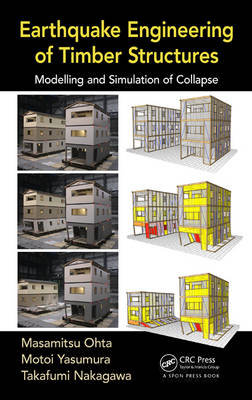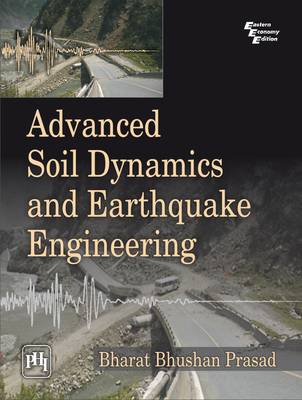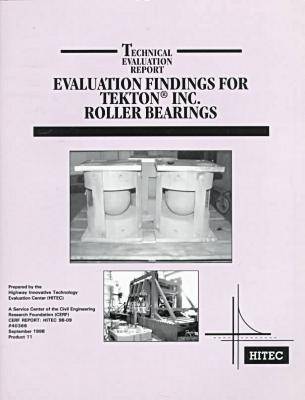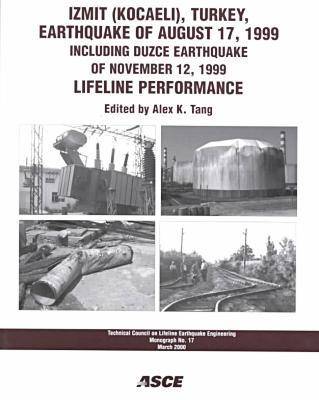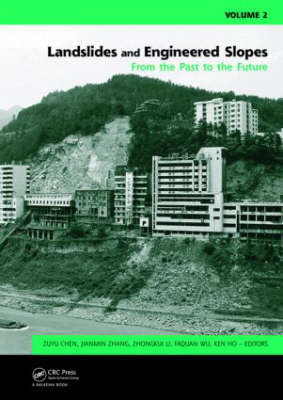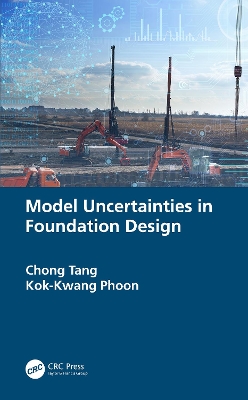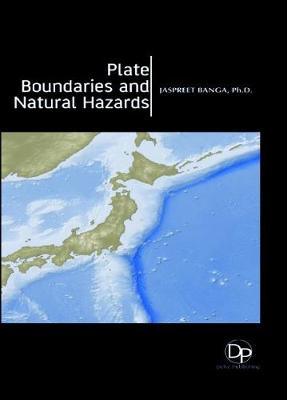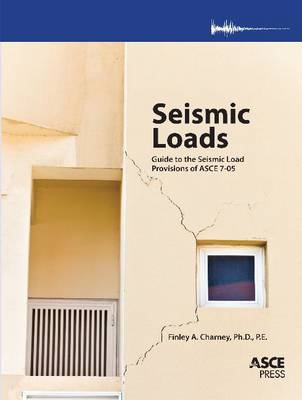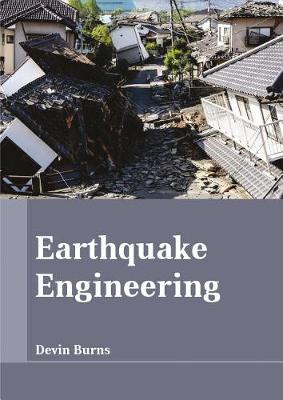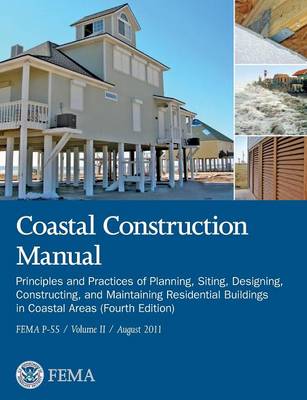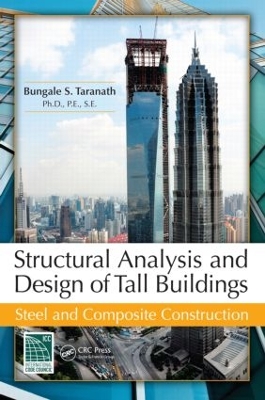Earthquake Engineering of Timber Structures
by Masamitsu Ohta, Motoi Yasumura, and Takafumi Nakagawa
In recent decades several major earthquakes have caused serious damage to wooden houses, highlighting the need for earthquake-proofing of timber structures. Existing design concepts are mainly based on the static considerations of shear-resistant walls or frames of timber structures, and thus cannot predict the behavior of severely damaged structures. Meanwhile, timber structure research has employed response analyses, large-scale tests and shaking tables, which have considerable increased unde...
Post-earthquake fire is one of the most complicated problems resulting from earthquakes and presents a serious risk to urban structures. Most standards and codes ignore the possibility of post-earthquake fire; thus it is not factored in when determining the ability of buildings to withstand load. This book describes the effects of post-earthquake fire on partially damaged buildings located in seismic urban regions. The book quantifies the level of associated post-earthquake fire effects, and d...
Advanced Soil Dynamics And Earthquake Engineering
by Bharat Bhushan Prasad
Design of Wind and Earthquake Resistant Reinforced Concrete Buildings
by Somnath Ghosh and Arundeb Gupta
Design of Wind and Earthquake Resistant Reinforced Concrete Buildings explains wind and seismic design issues of RCC buildings in brief and provides design examples based on recommendations of latest IS codes essential for industrial design. Intricate issues of RCC design are discussed which are supplemented by real-life examples. Guidelines are presented for evaluating the acceptability of wind-induced motions of tall buildings. Design methodologies for structures to deform well beyond their el...
Iacge 2013 (Geotechnical Special Publications, #232) (Geotechnical Special Publication (GSP))
Proceedings of the Second International Conference on Geotechnical and Earthquake Engineering, held in Chengdu, China, October 25-27, 2013. This collection contains 92 peer-reviewed papers on challenges and recent advances in geotechnical and seismic research and practice. Topics include: soil dynamics and earthquake engineering, foundation engineering and pile testing, excavation and shoring, embankments and retaining walls, tunnels and underground structures, dams and levees, slopes and landsl...
Prepared by the Highway Innovative Technology Evaluation Center (HITEC), a CERF Service Center. This report summarizes the results of a detailed evaluation of roller bearings, manufactured by Tekton, Inc. The report is part of a program to test the performance of 11 seismic isolators and dampers produced by several manufacturers. The devices were tested for stability, response during earthquake simulations, and fatigue and weathering effects.
Izmit (Kocaeli) Turkey Earthquake of August 17 1999, Including Duzce Earthquake
by Alex K. Tang
On August 17, 1999, the Izmit (Kocaeli) Earthquake tore through Kocaeli, Turkey, resulting in over 15,000 deaths and 27,000 injuries; 200,000 people were left homeless. The electric power system, nearly destroyed, sustained over US$70 million in damage. Another earthquake, November 12, to the east of Izmit at Duzce, added to the lifeline systems damage, impacting the communications system, water and wastewater system, ports, railway, road, and bridges. The Earthquake Investigation Committee of t...
Landslides and Engineered Slopes. From the Past to the Future, Two Volumes + CD-ROM
270 Expert contributions on aspects of landslide hazards, encompassing geological modeling and soil and rock mechanics, landslide processes, causes and effects, and damage avoidance and limitation strategies. Reference source for academics and professionals in geo-mechanical and geo-technical engineering, and others involved with research, design, construction and education related to high natural landslides and artificial engineering slopes. Set of 2 volumes plus searchable CD-ROM.
Seism Design Rts12
Model Uncertainties in Foundation Design is unique in the compilation of the largest and the most diverse load test databases to date, covering many foundation types (shallow foundations, spudcans, driven piles, drilled shafts, rock sockets and helical piles) and a wide range of ground conditions (soil to soft rock). All databases with names prefixed by NUS are available upon request. This book presents a comprehensive evaluation of the model factor mean (bias) and coefficient of variation (COV...
Rapid Visual Screening of Buildings for Potential Seismic Hazards: A Handbook
Sponsored by the Infrastructure Resilience Division of ASCE During 2010 and 2011, a sequence of strong earthquakes affected two communities in the province of Canterbury on the South Island of New Zealand. Christchurch, which is the second largest city in New Zealand, and Kaiapoi, in the Waimakariri District, suffered the greatest damage. Tens of thousands of buildings required demolition or significant reconstruction. Soil liquefaction, which was the leading cause of damage to lifelines, dicta...
Plate Boundaries and Natural Hazards
There have been two major tsunamis, the Indian Ocean tsunami in 2004 and October 2010 Sumatra earthquake on the same fault. Luckily, the Sumatra tsunami was not as disastrous, but still there were 435 mortalities and 20,000 people were displaced in Sumatra. On the other hand, the Indian Ocean tsunami resulted in 229,866 deaths in 14 countries and many more were displaced. The undersea megathrust earthquake, of magnitude 9.1-9.3, was caused when the Indian Plate was sub ducted by the Burma Plate...
Earthquake Engineering
Earthquake engineering is the science of the performance of buildings and structures when subjected to seismic loading. It also assists analyzing the interaction between civil infrastructure and the ground, including the consequences of earthquakes on structures. One of the most important aims of earthquake engineering is the proper design and construction of buildings in accordance with building codes, so as to minimize damage due to earthquakes. It is the earthquake engineer who ensures proper...
Seismic Loads: Guide to the Seismic Load Provisions of ASCE 7-05 provides authoritative explanations of the seismic provisions offered in Minimum Design Loads for Buildings and Other Structures href=http: //www.asce.org/Product.aspx?isbn=9780784408094 target=_blank>Minimum Design Loads for Buildings and Other Structures, Standard ASCE/SEI 7-05. With clear, concise language, Seismic Loads illustrates key concepts and guides structural engineers in applying the most current thinking in this rapidl...
This committee report contains information on seismic exposure, design and installation practices that may be used to improve the seismic performance of communication systems. The suggested practices are born of years of design, analysis, equipment testing and installation, inspection trips, and post-earthquake reconnaissance surveys. While communication systems have been shown to be robust in comparison to other lifeline systems, such as electric power and gas, a number of significant earthquak...
Earthquake Resistant Engineering Structures XIII (WIT Transactions on The Built Environment, #202)
Papers presented at the 13th International Conference on Earthquake Resistant Engineering Structures form this volume and cover basic and applied research in the various fields of earthquake engineering relevant to the design of structures. Major earthquakes and associated effects such as tsunamis continue to stress the need to carry out more research on those topics. The problems will intensify as population pressure results in buildings in regions of high seismic vulnerability. A better under...
This volume contains 28 papers by renowned international experts on the latest advances in structural reliability methods and applications, engineering risk analysis and decision making, new optimization techniques and various applications in civil engineering. Moreover, several contributions focus on the assessment and optimization of existing str
Coastal Construction Manual Volume 2
by Federal Emergency Management Agency and U S Department of Homeland Security
As software skills rise to the forefront of design concerns, the art of structural conceptualization is often minimized. Structural engineering, however, requires the marriage of artistic and intuitive designs with mathematical accuracy and detail. Computer analysis works to solidify and extend the creative idea or concept that might have started out as a sketch on the back of an envelope. From Sketches on the Back of an Envelope to Elegant, Economical Buildings—The Art of Structural Conceptual...
